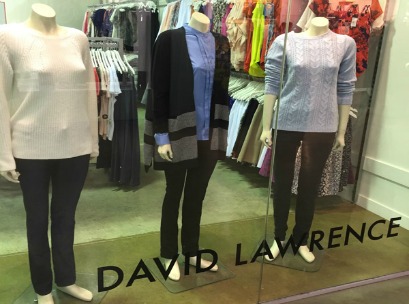The recent announcement that the M.Webster Holdings businesses have been placed into voluntary administration and are looking for a buyer or bailout has received mixed responses. But has this outcome really surprised people who know retail? This isn’t the first nor will it be the last Australian fashion brand who succumbs to the pressures of contemporary retail so it shouldn’t come as a surprise at all. Every commercial outcome has to do with performance within a competitive context. While t
he Australian retail sector as a whole is achieving record sales and growth is matching the 50-year average growth rate for retail sales, fashion category sales growth has been constrained. Gross sales have not retreated nor have unit volumes stopped growing. But there are some very deep self inflicted wounds that have relegated the days of the easy generation of large chunks of free cash-flow to history.
Australian domestic fashion retailers increasingly fight in the same pool of consumer cash with a growing array of international competitors. They are out of alignment with consumer stimulation, disconnected with the aspirational magnetism required to seduce sales and build brand, not synchronised to the seasonal patterns of consumer purchase and creating massive deflationary impacts due to an over-reliance on discounting that increasingly does not work.
The Australian fashion industry does not need to hit the panic button; it needs to hit the reset button or it runs the risk of going the way of many other industry sectors in this country. Historical beliefs must be abandoned and some key principals embraced and exploited – fast. Fashion is and always will be aspirational in a first world country like Australia. Aspiration is about ideas and differentiation and magnetism. Australia has many competitors that have easily capitalised on aspects for differentiation, which have almost always been either under-exploited or worse still ignored. In a country with a population of 24 million people, profit through volume is an unsustainable model for all but a few large scale, incredibly efficient, deeply resourced businesses (usually global brands).
Australian fashion needs to start developing our own unique voice and realising that the ultimate repeat purchase stimulation is product. All roads lead to unique, desirable product with production hallmarks built up to a value for money proposition not down to a price. Too many Australian fashion retailers are now sourcing to a buy price from the same sources as global competitors, providing me-too product through very ordinary customer experiences and using discounting too heavily. As a result, the customer is voting with their wallet.
Our market place is the world. The product we present to the customer must be an alternative to what they can get from every other physical or virtual doorway they enter. You will never be able to outmuscle a global monster like Uniqlo, Zara or H&M for glorified basics at disposable fashion prices. Leave that to K-Mart and Cotton On. If you want to not only survive, but prosper, you have to develop innovative, unique product that takes all the personality and natural opportunities Australia and our lifestyle provides and turn them into products and customer experiences that are seductive for both the domestic consumer and in turn the world.
If you can’t work out how to be better and different commercially, commerce will make sure you don’t survive. David Lawrence is far from the last to raise the white flag.
Peter James Ryan is head of Red Communication and can be contacted on (02) 9481 7215 or at peter@redcommunication.com.
Access exclusive analysis, locked news and reports with Inside Retail Weekly. Subscribe today and get our premium print publication delivered to your door every week.

